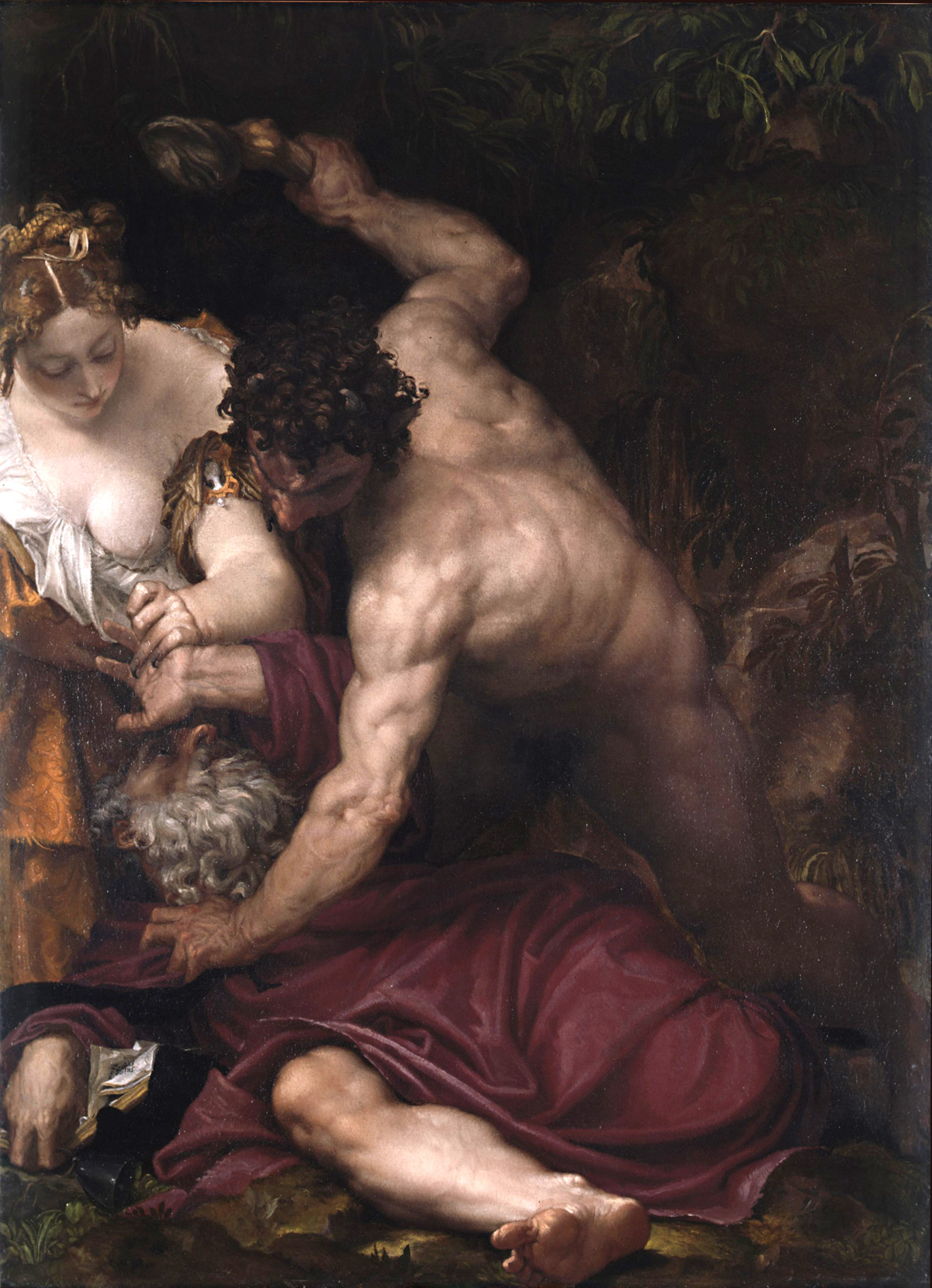As some of you may know, last weekend I went to Paris with my mother for a brief but wonderfully refreshing trip. I knew before I even left that this post would be about one of the many paintings I would see at the Louvre. Technically, this version of St. Anthony isn't owned by the museum-- it's on loan for the unbelievably rich exhibition, Titian, Tintoret, Veronese: Rivals in Renaissance Venice, from the Caen Museum of Beaux-Arts.
Apart from the fact that I couldn't stop looking at this painting when I saw it, I wanted to write about it in contrast to a post I did about Michaelangelo's Torment of St. Anthony some three months ago. To contextualize a little, this one is Paolo Caliari Veronese's Temptation of St. Anthony (1553), and St. Anthony, of course, is the central figure with his two demons above him in human form. In this post I don't want to talk about torment, or Michaelangelo (though he has definitely influenced the male body in this image), as much as I want to talk about how St. Anthony himself is a temptation for the artist in this image. What does it mean to immortalize the human moment in the figure of someone who has, in a sense, transcended himself? Is this truly a temptation or is this a figure so reduced in this moment that he prays not to his god, but pleads to his tempters? And lastly, is there a symmetry of some kind between the three figures, i.e. is it temptation and man that make a whole?
Not to digress, but a while back I read Borges' Conjectural Poem and in a conversation about it I came up with the notion that Heaven is, in a sense, a place where the good, vanquished from the battle on earth, go after they are defeated by earthly demons. And though I had forgotten about this reading of Heaven, I think this image of St. Anthony is brings it back. His body is right now that battlefield where the two demons are wrestling with their invisible enemies, faith and conscience. In each moment, with every blow it receives from the male demon, it also (if allowed) takes pleasure in the breast that hangs above it. The body of St. Anthony, then, receives each blow and is the conquered territory-- in a way it's all we have of the human saint, a body-battlefield, a body-torn, a body-in-agony.
Where is St. Anthony himself?
I want to answer this question in conjunction with one of my initial questions: is there a symmetry in the figures? Yes, there is a symmetry, a very curious one at that-- if we look carefully at the image, we'll see that there is a fourth human form in the painting, one that is made whole by parts of the three bodies of both the demons and St. Anthony. The female demon's breast, follows the exposed crotch of the male demon, which is then followed by St. Anthony's extended leg. There we have it, the human form from top to bottom. And in this whole human form we have St. Anthony, torn between gender, torn between body and soul, bible and breast. He is two-headed in order that he be tempted, while his third head exposes the agony of the body-battlefield.
This is Veronese's temptation: to represent the man who has transcended himself. But how does one represent St. Anthony's particular brand of transcendence? There is sainthood, but this is a sainthood that splits itself amongst demons, and other earthly things. This is a sainthood that is saintly because while it pleads for resistance, it wants to know what it is that it resists, it touches the breast, it takes the blow, and in the same instant, it clutches the book.


No comments:
Post a Comment